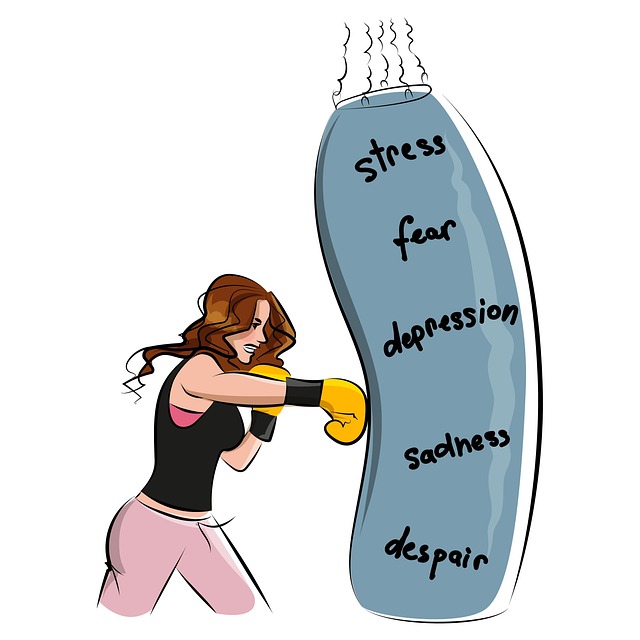Broomfield American Sign Language (ASL) Therapy excels in harm minimization through comprehensive risk assessment, focusing on client safety and well-being. By evaluating physical spaces, client backgrounds, and communication styles, therapists proactively manage risks. Integrated programs for depression prevention, social skills training, and mental health education enhance positive outcomes. Strategies like Mental Wellness Journaling Exercise Guidance and Mind Over Matter principles prevent burnout, ensuring a dynamic, supportive therapeutic environment for diverse clients, as illustrated by successful case studies.
Risk assessment and harm minimization are crucial aspects of any therapeutic practice, including Broomfield American Sign Language (ASL) therapy. This comprehensive guide explores the essential elements of risk management, focusing on identifying potential hazards and implementing effective strategies for safety. We delve into the role of harm minimization in ASL therapy, providing insights through case studies and emphasizing continuous improvement through regular plan reviews. By understanding these key components, therapists can ensure a secure environment for their clients.
- Understanding Risk Assessment: Identifying Potential Hazards
- The Role of Harm Minimization in Therapy
- Strategies for Effective Planning and Implementation
- Case Studies: Successful Risk Management in ASL Therapy
- Continuous Improvement: Regularly Reviewing and Updating Plans
Understanding Risk Assessment: Identifying Potential Hazards

Understanding Risk assessment is a fundamental step in harm minimization planning, especially for fields like Broomfield American Sign Language Therapy (ASLT). Identifying potential hazards involves meticulously scanning all aspects of the therapeutic environment and processes. This includes evaluating physical spaces to ensure they’re accessible, safe, and conducive to effective ASLT sessions. It also encompasses assessing client backgrounds, medical histories, and communication styles to predict possible challenges or triggers that could escalate into risks during therapy.
By integrating Depression Prevention, Social Skills Training, and Mental Health Education Programs Design into risk assessment protocols, Broomfield ASLT professionals can proactively address various issues. For instance, recognizing social isolation as a potential hazard might lead to implementing group therapy sessions focused on enhancing social skills. Similarly, understanding the impact of unaddressed mental health concerns could prompt the development of tailored educational programs designed to foster resilience and coping mechanisms, thereby minimizing risks and enhancing overall client well-being.
The Role of Harm Minimization in Therapy

In the realm of therapy, harm minimization plays a pivotal role in ensuring client safety and well-being, particularly within specialized fields like Broomfield American Sign Language (ASL) Therapy. This approach is not merely about avoiding harm but proactively implementing strategies to enhance positive outcomes. Therapists employing ASL as a medium must be adept at risk assessment, a crucial skill that involves identifying potential hazards and implementing effective mitigation measures. By integrating empathy-building strategies, mental wellness coaching programs can be tailored to address individual needs while fostering a safe and supportive environment.
The process begins with comprehensive risk assessment for mental health professionals, who then develop harm minimization plans. These plans are dynamic and adaptive, allowing therapists to respond promptly to emerging challenges. In the context of ASL therapy, this might involve modifying communication methods, providing additional support for clients with sensory processing difficulties, or incorporating visual aids to enhance comprehension. Such tailored interventions not only minimize potential harms but also enrich the therapeutic experience, making it more inclusive and effective for all participants.
Strategies for Effective Planning and Implementation

Effective risk assessment and harm minimization planning require a strategic approach, especially in fields like Broomfield American Sign Language Therapy (ASLT). One key strategy involves utilizing Mental Wellness Journaling Exercise Guidance tailored to the unique needs of ASLT practitioners. By documenting thoughts, emotions, and experiences, professionals can identify potential risks early on, such as burnout, which is a significant concern in high-demand fields like language therapy. This practice encourages self-reflection and allows for proactive measures to be taken.
Additionally, incorporating Mind Over Matter Principles can fortify the planning process. Teaching clients techniques to manage stress and anxiety not only enhances their overall mental wellness but also prepares them for potential challenges they may face during therapy. Burnout prevention is a critical aspect of harm minimization, ensuring that both practitioners and clients maintain a healthy and positive therapeutic experience.
Case Studies: Successful Risk Management in ASL Therapy

Broomfield American Sign Language (ASL) Therapy has been at the forefront of innovative risk assessment and harm minimization planning in the field of mental health support. Their approach involves comprehensive case studies that illustrate effective risk management strategies tailored to individual needs, particularly focusing on clients with diverse mental illnesses. By employing these methods, they’ve successfully mitigated potential risks associated with therapy sessions, ensuring a safe and supportive environment.
One notable case highlights their strategy for addressing anxiety relief among youth facing communication barriers. Through meticulous risk assessment, the team identified specific triggers and implemented tailored interventions. These efforts not only enhanced Mental Health Awareness but also contributed to the reduction of stigma related to mental illness within the community. The positive outcomes underscore the clinic’s commitment to creating inclusive spaces that foster meaningful connections and support for individuals navigating their mental health journeys.
Continuous Improvement: Regularly Reviewing and Updating Plans

In the dynamic field of mental health care, continuous improvement is paramount. Just as the needs of clients evolve, so too must the strategies employed by professionals like those at Broomfield American Sign Language Therapy. Regularly reviewing and updating harm minimization plans is a cornerstone of this process. This iterative approach ensures that interventions remain relevant, effective, and aligned with best practices in mental health education programs design. Through ongoing evaluation, professionals can identify gaps in their initial risk management planning for mental health professionals and make data-driven adjustments to better support client outcomes.
This proactive stance extends beyond simply reacting to challenges; it involves integrating insights from Mental Wellness Journaling Exercise Guidance into daily practice. By documenting experiences, both successes and setbacks, professionals gain valuable perspectives that inform plan modifications. This cycle of review and revision not only strengthens risk assessment but also fosters a culture of resilience within the mental health care community, ultimately enhancing client safety and well-being.
Broomfield American Sign Language (ASL) therapy emphasizes the importance of thorough risk assessment and harm minimization planning for client safety. By identifying potential hazards, therapists can implement tailored strategies that effectively mitigate risks while enhancing therapeutic outcomes. Through successful case studies and continuous improvement through regular plan reviews, Broomfield ASL Therapy sets a standard for comprehensive risk management, ensuring clients receive secure and supportive care throughout their journey.














